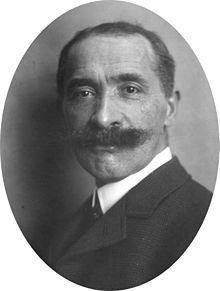Name Louis Cordonnier Role Architect | Parents Jean-Baptiste Cordonnier | |
 | ||
Died 1940, Peyrillac-et-Millac, France Children Louis-Stanislas Cordonnier Structures Peace Palace, Basilica of St. Therese, Lisieux | ||
conférence cordonnier partie 1
Louis Marie Cordonnier (July 7, 1854, Haubourdin, Nord – 1940) was a French architect, born in Haubourdin and associated principally with Lille and the French Flanders region.
Contents

conférence cordonnier partie 2
Biography
Son of the architect Jean-Baptiste Cordonnier (1820–1902), Cordonnier studied at the Ecole des Beaux-Arts in Paris. He returned to Lille for his first major commission, the 1881 town hall of Loos. His chosen style was a strongly regional Flemish Renaissance Revival in brick, with a characteristic belfry tower.
Further civic commissions in the area culminated in Cordonnier's best known work, the Peace Palace in The Hague, seat of the International Court of Justice. There his neo-Flemish entry won a design competition against far more modern competitors like Hendrik Berlage and Otto Wagner. The jury's choice proved controversial enough to fuel lawsuits for seven years.
Cordonnier alternated his regional Flemish style with occasional essays in the neo-classical Beaux-Arts style so prevalent in Paris during these years. In Lille the architect's Flemish Chamber of Commerce building of 1910-1921 stands twenty paces away from his Beaux-Arts Opéra de Lille of 1903-1914, its design said to be inspired by Garnier's Paris Opera.
In the wake of the widespread destruction of World War I in this part of France, Cordonnier took the lead in efforts to rebuild civic buildings and local churches in strictly traditional style, although not averse to using structural concrete. Towards the end of his career he was joined in practice by his son, Louis-Stanislas Cordonnier (1884–1960).
Work
His work includes:
